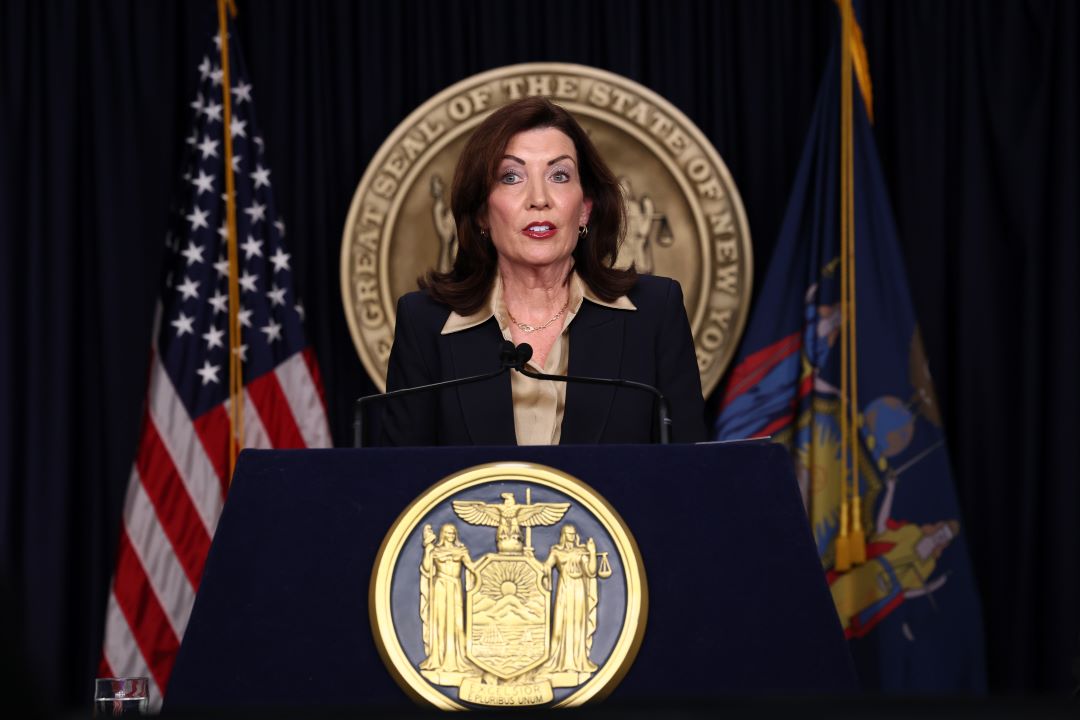After a nearly two-month delay, Mayor Bill de Blasio’s office on Friday released its study on Uber and other for-hire vehicle (or ridesharing) companies. The mayor’s report does not support his previously-proposed one percent cap on the annual growth of ridesharing companies. The stated reason for his cap was concerns over ridesharing’s effect on Manhattan traffic.
“Even as ridesharing grew dramatically and New York City traffic slowed, total vehicle-miles traveled in Central Manhattan remained flat over 2014 and 2015: the traffic slowdown was due to other causes.”
The report, for which the consulting firm McKinsey was paid $2 million, is a stunning turnaround from de Blasio’s position in July. To support his proposed cap, de Blasio penned an oped for the New York Daily News titled “A Fair Ride for New Yorkers.” Referring to Uber, he wrote, “No company’s multi-billion-dollar political war chest gives it a blank check to skirt vital protections and oversight for New Yorkers.”
De Blasio was upset with Uber because the company mobilized its customers to oppose restrictions on ridesharing’s growth. He was forced into a truce where, in exchange for access to Uber’s private ride data, ridesharing companies were allowed to expand while the traffic study was conducted.
A cap would have squared poorly with de Blasio’s progressive principles. As I wrote in my report Manhattan Institute report Uber Positive, ridesharing has increased transportation options for low-income, outer-borough New Yorkers.
As Uber grew, its trips moved from Central Manhattan and the airports to outer-borough neighborhoods such as Astoria, Harlem, Jackson Heights, and Washington Heights. These areas experienced more than 1,200 percent growth in monthly UberX rides over the course of 2014. Throughout New York, Uber grew most in low-income zip codes.
If Uber’s growth had been capped in January 2014, lower-income, outer-borough residents would have had access to 200,000 fewer rides in December 2014. Almost 7,000 UberX trips a day would have never occurred. Policymakers now realize that these sorely-needed transportation options should not be removed over unfounded traffic concerns.
Even as ridesharing grew dramatically and New York City traffic slowed, total vehicle-miles traveled in Central Manhattan remained flat over 2014 and 2015: the traffic slowdown was due to other causes.
The city’s report states that the 10 percent reduction in Manhattan traffic speeds over the past two years cannot be attributed to ridesharing. Instead, the culprits were construction activity, double parking, and the city’s general economic and population growth.
Even if the cap is no longer a threat, there are other New York City policies that hinder ridesharing’s growth. Before they can begin to work, ridesharing drivers in New York City have to gain Transportation and Limousine Commission commercial licenses. New York is the only U.S. city that requires this step. As ridesharing’s success and safety record across the nation has shown, licensing is not necessary to protect the public.
The city’s report does call for speeding up the licensing process, to help both ridesharing and taxi drivers. Online options that would reduce processing time are being evaluated, along with licenses that last longer than the current two years.
The city is also turning its sights to shaking down ridesharing companies for additional mass transit funds. The report states, “As an intensive user of City streets, it is appropriate that for-hire vehicle companies participate in funding these needs, and… pay their fair share.”
In the absence of any sales tax, there is a $0.50 surcharge on each yellow and green taxi ride that goes to support the Metropolitan Transportation Authority. An additional $0.30 per rides goes to promoting accessibility for disabled passengers. Ridesharing passengers do not have to pay these fees, but they do pay an 8.875 percent sales tax, of which 4.5 percent goes to the city and .375 percent goes to the MTA.
Ridesharing passengers are paying their fair share because for trips that cost over $9, ridesharing passengers are paying more in taxes than taxi passengers pay in fees.
Taxi passengers should not be subsidizing the MTA. Transit users, rather than taxi riders, should fund the system. But if MTA and accessibility fees are applied to ridesharing companies, the sales tax requirement should be eliminated to promote an equal playing field with taxis.
The report concludes that, “differential regulations for taxis compared to other categories of for-hire vehicles limit traditional yellow taxis’ ability to compete effectively with e-dispatch services.”
With those words, New York City is waking up to the reality that it should make taxis more like Ubers instead of making Ubers more like taxis. Now it is up to de Blasio and the New York City Council to embrace a regulatory framework that allows a multitude of transportation options to thrive.
This piece originally appeared in Forbes
This piece originally appeared in Forbes


